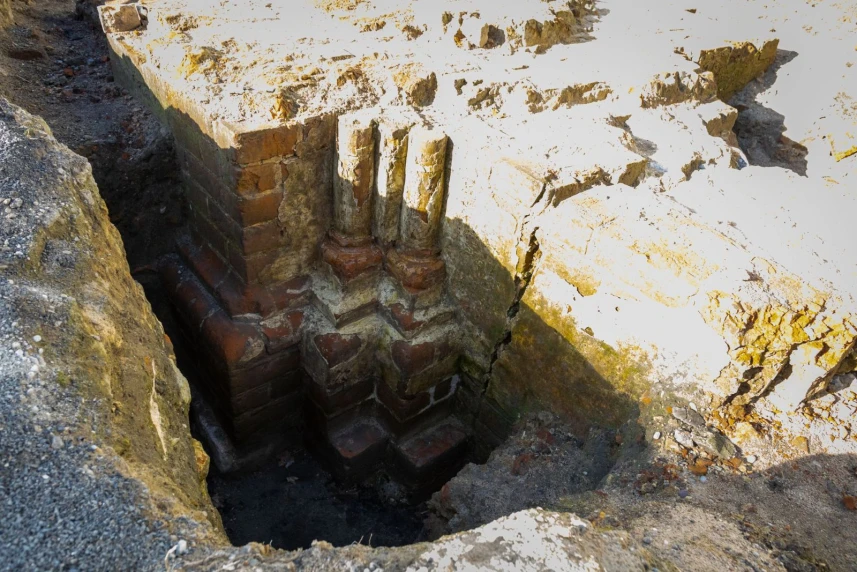New facts in the New Market Square
Marta Kufel

Originally surrounded by uncertainty and laden by question marks, the project ended with a sensational discovery and many valuable finds of relics. The New Market Square survey has come to an end, but this extraordinary story will live on.
The architectural and archaeological survey of the Saint Nicholas Church was conducted for the last two months. A couple years back, the prevailing assumption was that the church was originally made of wood and later torn down, and that it was some hundred years later that the imposing brick structure was erected and served Szczecin’s burghers until the early 19th-century fire. Hidden underground, there was a piece of wall adorned with distinctive motifs, whose form makes it clear that the wall dates back to no later than about the mid-13th century.
“Originally, our survey was not meant to cover the entire area of the market square, but only to uncover the most important pieces from church ruins,” said Szczecin Heritage Officer Michał Dębowski. “The main goal of our survey is to set out detailed conservation guidelines for the market square’s future site development plan.
This is another step in the Old Town’s Four Market Squares programme implemented to reinvent this space.
“When we started, we were wondering if we discover anything at all,” said Maciej Płotkowiak, Doctor of Architecture, Engineer, in charge of the architectural works. “We knew from archival records that relics of the eastern part of the church were uncovered in 1993, but it did not mean that they still existed. Yet, already our first dig revealed presbytery walls, getting us on track to find other parts of the church. Initially, our findings were consistent with what we expected. At some point, however, what we saw was a pillar that changed our understanding of Szczecin’s history.
According to the architect, the profiled cornice is “the seventh wonder of plastic arts, a work of supreme quality.”
“It turns out that what we are touching is a piece of Szczecin’s oldest brick architecture,” added Maciej Płotkowiak. “We knew that there was a church here. What we did not realise was that it had a predecessor – an older structure of such artistic valour. “Still, we do not actually know if it was fully constructed at all, or whether its construction was abandoned. What we know for sure is that it is a prime piece of architecture, whose detail can be compared only to that of the Kamień Pomorski Cathedral’s first phase, or the architecture of the abbatial church in Kołbacz.
A comprehensive report will be drawn up by the end of 2022, comprising a scientific discussion of the findings and setting out detailed conservation guidelines for the New Market Square restoration project. Based on the findings, detailed conservation guidelines will be drawn up to define the optimum methods of exhibiting these relics.
“The excavation area was marked out based on painstaking architectural calculations. And the outcome was excellent, we nailed it with almost each of the twelve exploration digs,” said Marcin Peterlejtner, who is in charge of the archaeological works. “From the very start, we were faced with the concern that there were extremely few architectural elements left. We decided to do the work only manually, and this was a good call, as we found the pieces directly under the paving, in good condition.”
To make sure they are secure, these relics will be covered with soil for winter. However, for the next couple of months, an exhibition will be held in the New Market Square on the history of the Saint Nicholas Church. The exhibition has been installed on the fencing walls of the square, facing Targ Rybny.